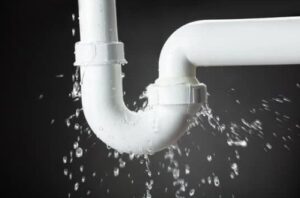Water damage can strike unexpectedly, leaving homeowners not only with structural damage but also questions about restoration costs. Understanding what goes into the cost of water damage restoration can help you prepare and make informed decisions during a stressful time. Here’s what you need to know about the factors that influence pricing and how to navigate the process effectively.
Factors That Affect the Cost of Water Damage Restoration
1. Extent of the Damage
The severity of the water damage plays a significant role in determining the cost. Minor leaks affecting a small area will cost less to restore than extensive flooding impacting multiple rooms or floors. Damage to structural elements, such as walls and flooring, will also increase expenses.
2. Type of Water Involved
The type of water that caused the damage is another key factor:
- Clean Water: From sources like a broken pipe or rainwater. Restoration is generally less expensive.

- Gray Water: From appliances like washing machines or dishwashers, requiring additional cleaning.

- Black Water: Contaminated water from sewage or floodwaters, requiring specialized cleanup and decontamination, which increases costs.
Identifying Category 3 Water Damage
Recognizing category 3 water damage is crucial for implementing appropriate remediation measures. Signs of category 3 water damage include:
- Foul Odor: A strong, unpleasant smell resembling sewage or decaying organic matter indicates the presence of contaminated water.
- Visible Presence of Sewage: The sight of sewage or standing water containing debris suggests the involvement of category 3 water damage.
- Discoloration or Staining: Noticeable discoloration or staining on walls, floors, or ceilings, often results from prolonged exposure to contaminated water.
- Mold or Mildew Growth: The emergence of mold or mildew within affected areas indicates excessive moisture and potential contamination by category 3 water.
If you notice any of these signs following a water-related incident, it’s essential to be cautious and seek professional assistance quickly.
3. Time Since the Damage Occurred
The quicker the response, the lower the cost. Delays in addressing water damage can lead to secondary issues like mold growth, which requires additional remediation and increases the overall price.
4. Size of the Affected Area
The size of the damaged area directly impacts labor and materials costs. Larger spaces require more time and equipment to restore, leading to higher expenses.
5. Required Repairs
If the water damage is extensive, repairs such as replacing drywall, flooring, or structural elements will significantly add to the total cost. These repairs are often necessary after severe flooding or prolonged exposure to moisture.
Average Cost of Water Damage Restoration
While prices can vary based on the factors above, here’s a general breakdown:
- Minor Water Damage: $1,000–$3,000 (small leaks affecting one room or area)
- Moderate Water Damage: $3,000–$8,000 (larger areas or multiple rooms)
- Severe Water Damage: $8,000–$20,000 or more (extensive flooding, structural damage, and mold remediation)
It’s important to note that these are averages, and your specific situation may differ.
Does Insurance Cover Water Damage Restoration?
In many cases, homeowners insurance policies cover water damage restoration costs. However, coverage depends on the source of the damage and your policy’s terms. For instance:
- Sudden and accidental damage (e.g., a burst pipe) is typically covered.
- Gradual damage or damage due to neglect is often not covered.
It’s essential to review your policy and speak with your insurance provider to understand your coverage. Many restoration companies can also assist with filing insurance claims.
Tips for Managing Water Damage Restoration Costs
- Act Quickly: The sooner you address water damage, the lower the overall cost.
- Choose a Reputable Restoration Company: Work with certified professionals who provide transparent estimates and quality work.
- Document the Damage: Take photos and videos to support your insurance claim.
- Maintain Your Home: Regular maintenance can help prevent water damage and minimize future costs.
Conclusion
Water damage restoration can be costly, but understanding the factors that influence pricing and taking proactive steps can help you manage the process. If you’re facing water damage, reach out to a trusted restoration company like RestoPros of Hudson County for a detailed estimate and expert guidance. Our team is here to help restore your home and peace of mind quickly and efficiently.
